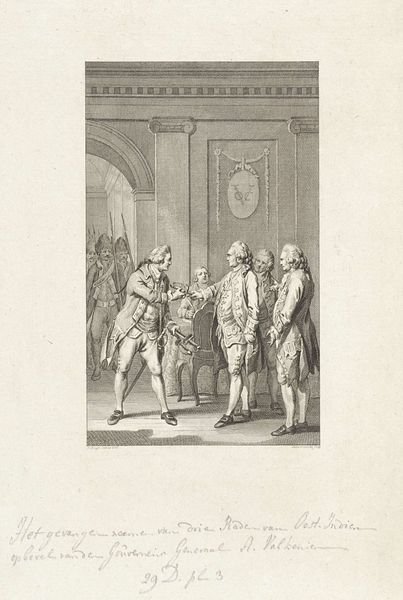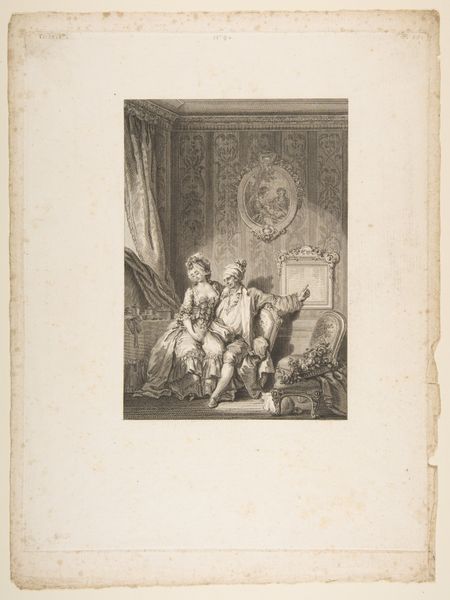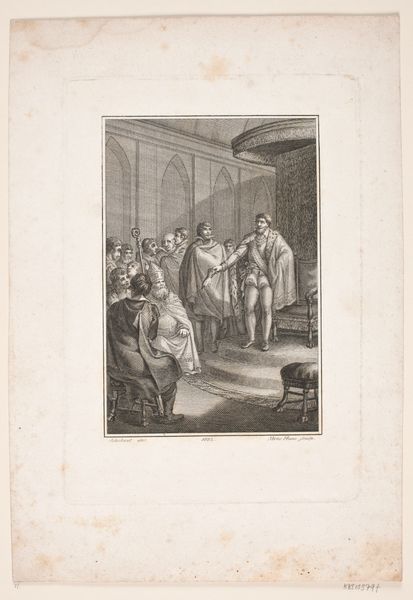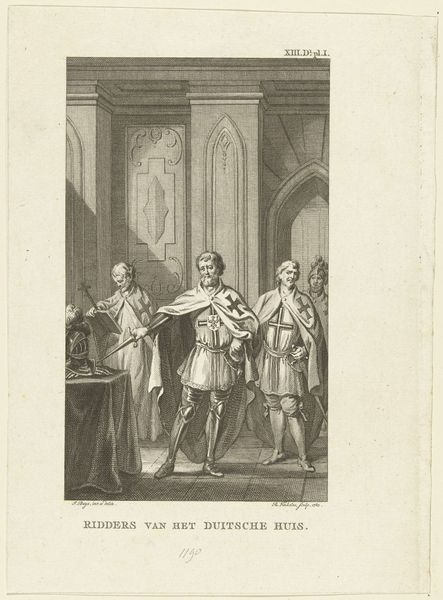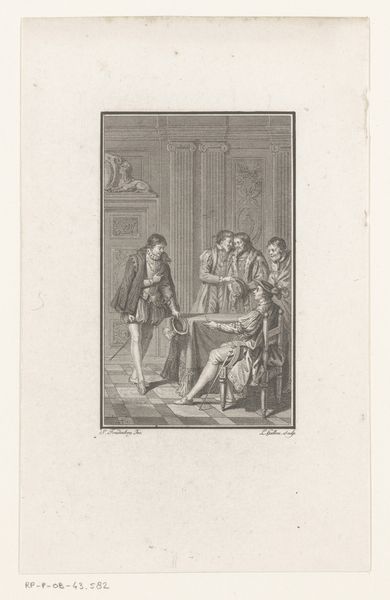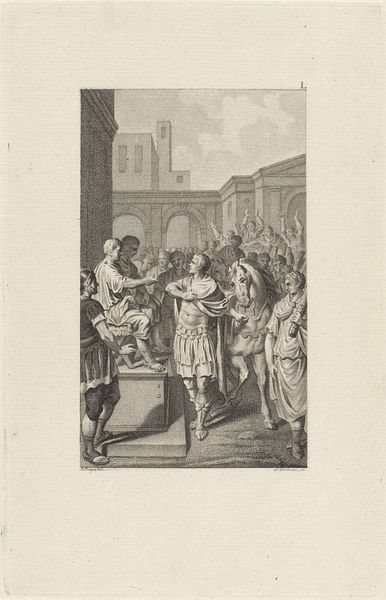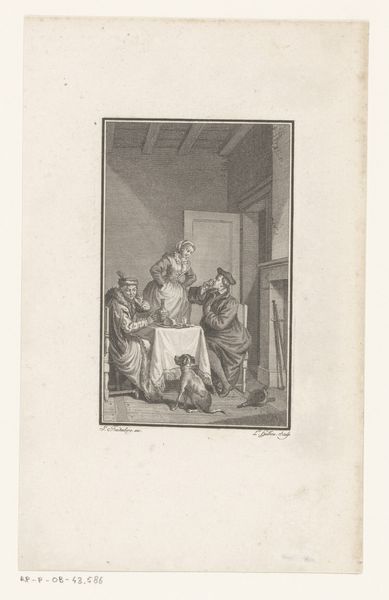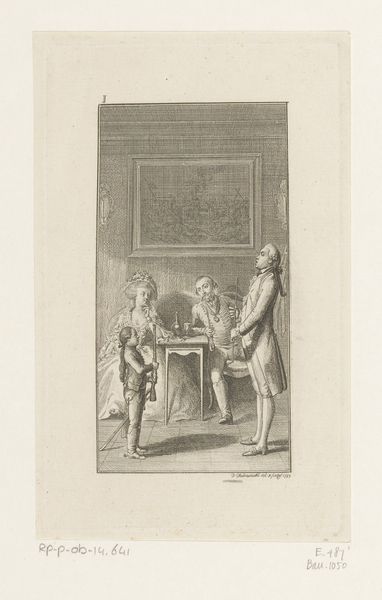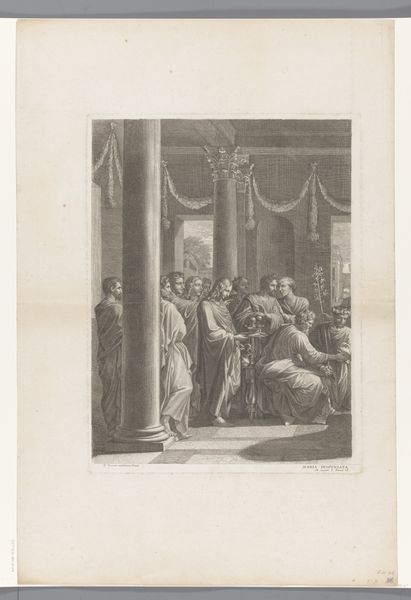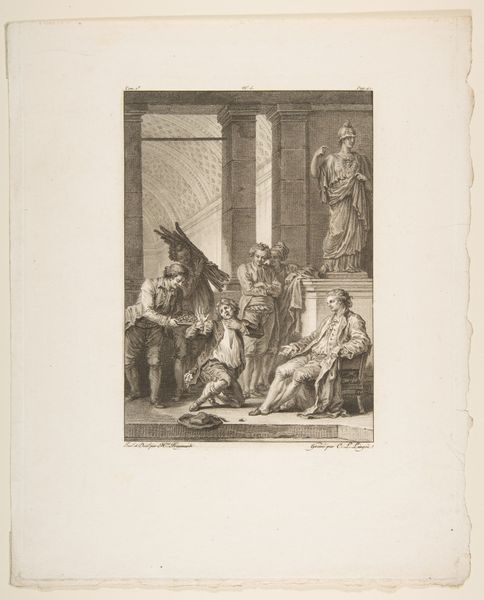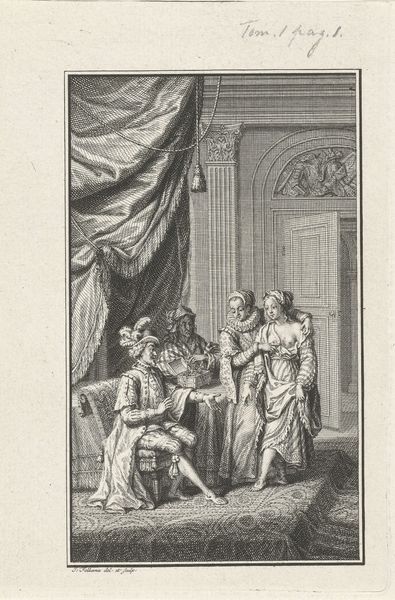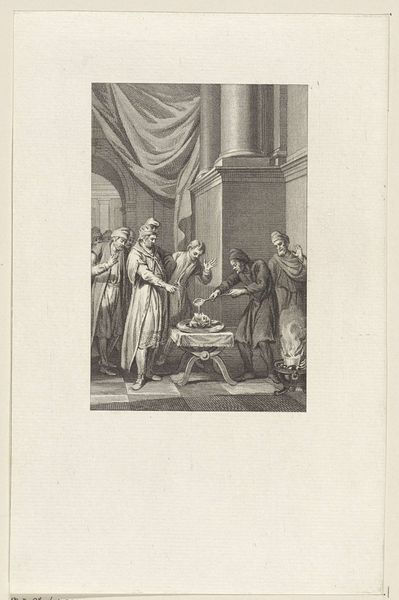
Dimensions: height 143 mm, width 83 mm
Copyright: Rijks Museum: Open Domain
Curator: Daniel Nikolaus Chodowiecki created this etching, "Gretchen Neemt Afscheid," in 1781. Editor: There’s a strong emotional current even in this small print. A woman kneels, clutching what appears to be a child, while a group of men look on with varying expressions of disapproval and pity. Curator: Exactly. The image references Goethe's "Faust," specifically the tragic story of Gretchen, who is ostracized and ultimately executed for infanticide. It's a powerful critique of societal judgment. Editor: The bowed head of the woman is particularly striking; it directs the viewers to the action, yet cloaks it with shadow. It's hard to not think of Christian iconography—of a devotional image reversed—her head veiled not in reverence, but in shame. Curator: The artist situates us right within a patriarchal, judgmental setting. Notice the attire: all the men are looking down upon her, clad in their finery, representing law, authority, social stature…while she is literally on her knees, disheveled. It is so starkly illustrative of societal power structures. Editor: What's interesting is that the men don’t seem villainous, only…unreachable. Symbols are really embedded, with light coming from behind Gretchen to signal the symbolic value of hope despite such despondency. Do you think the artist suggests some sliver of salvation here? Curator: Possibly, yes. But the overall impact remains deeply unsettling, pushing the viewer to acknowledge their own potential complicity in systems of oppression. Editor: It truly functions as a memento mori in many ways, and urges us to look into those dark, silent chambers that morality can build in us. Curator: An important and challenging commentary on the destructive nature of judgment, even centuries later. Editor: Indeed; symbols like these offer pathways for our memories—collective and personal—and provide new connections to past wounds, and thus a kind of hopeful awareness.
Comments
No comments
Be the first to comment and join the conversation on the ultimate creative platform.
